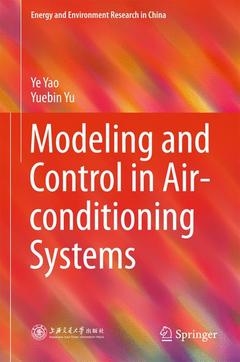Description
Modeling and Control in Air-conditioning Systems, 1st ed. 2017
Energy and Environment Research in China Series
Language: English
Publication date: 10-2016
Support: Print on demand
Publication date: 06-2018
Support: Print on demand
Description
/li>Contents
/li>Comment
/li>
This book investigates the latest modeling and control technologies in the context of air-conditioning systems. Firstly, it introduces the state-space method for developing dynamic models of all components in a central air-conditioning system. The models are primarily nonlinear and based on the fundamental principle of energy and mass conservation, and are transformed into state-space form through linearization. The book goes on to describe and discuss the state-space models with the help of graph theory and the structure-matrix theory.
Subsequently, virtual sensor calibration and virtual sensing methods (which are very useful for real system control) are illustrated together with a case study. Model-based predictive control and state-space feedback control are applied to air-conditioning systems to yield better local control, while the air-side synergic control scheme and a global optimization strategy based on the decomposition-coordination method are developed so as to achieve energy conservation in the central air-conditioning system. Lastly, control strategies for VAV systems including total air volume control and trim & response static pressure control are investigated in practice.
Includes many advanced modeling methods in the field of heating, ventilation, air conditioning and refrigeration (HVAC & R) and building environments
Offers a detailed introduction to HVAC systems and building environments
Makes a significant contribution to the development of energy-saving technologies in air-conditioning systems and buildings
Includes supplementary material: sn.pub/extras




